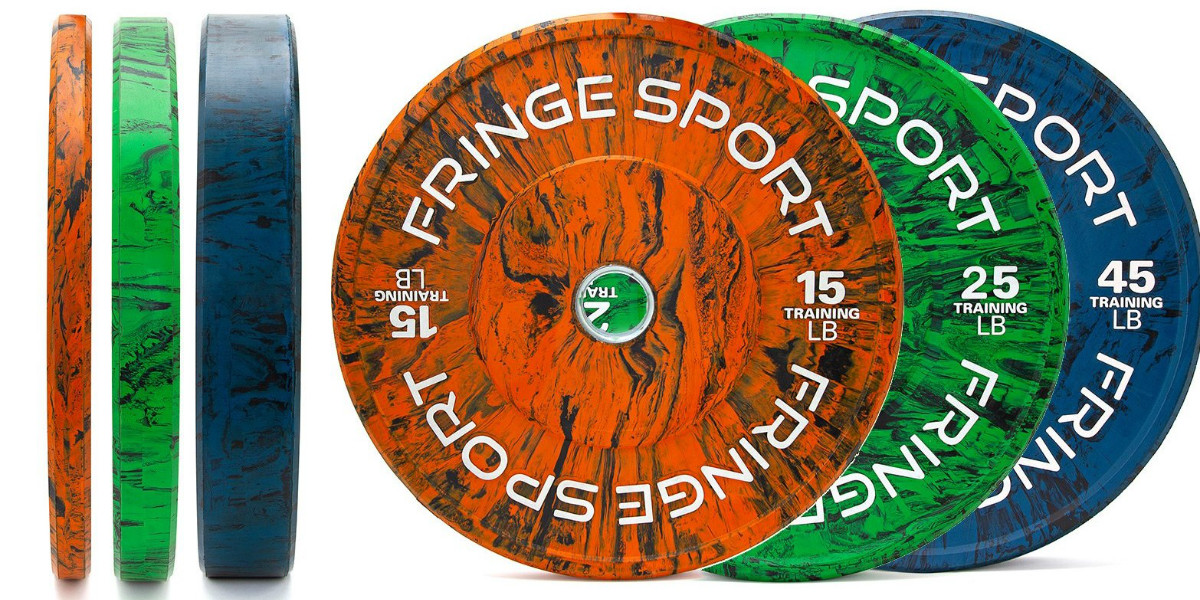As usual, some random interesting things I collected over the last month!
Table of Contents
Squats and Bad Knees?
Youtuber hard2hurt has videos on MMA and self defense I like watching. One new video is on squats.
“I can’t squat cuz I’ve got bad knees!”
You don’t have bad knees. You just have knees. They’re all like that.
Immediately I liked how the video started!
I like his advice on keeping the knees out, but he advocates more of an upright squat than the way Rippetoe and Starting Strength coaches teach it.
The way I do it, even without weight, my torso is a bit too much forward for the door frame style squat he shows where your head doesn’t move forward at all. My weight is balanced over my midsole, and for me I feel like it’s better to lean forward that amount and that there isn’t a point to be more unbalanced by being on my heels.
Some knee issues can be caused simply by lack of strength:
As Dr. Rusin has stated in the past, unilateral exercises are one of the most powerful orthopedic health indicators out there, as a lack of single-leg strength, stability, and/or balance is closely linked to lower back, hip, and knee pain.
https://drjohnrusin.com/bulgarian-split-squats-a-superior-alternative-to-barbell-back-squats/
This brings us to the next topic…
Squats Shouldn’t Hurt Your Back or Shoulders
A common squat error with beginners is bar placement. Virtually everyone who hasn’t gone out of their way to learn the right bar placement does what we call a “high bar squat”, which for beginners is a bad idea if they’re increasing the weight. This video gives a great quick demonstration of the right spot on your back for a low bar squat.
The reason this is the correct bar position is because this is the most comfortable spot that can take more and more weight without problems as you load the bar. In this position it never feels painful in terms of the integrity of your spine. You should be able to do a set of squats with your upper back feeling just fine afterwards.
Some advanced lifters do a high bar placement, which changes the mechanics of the squat a little with more of an upright torso. That’s up to them. They know what they’re capable of doing safely, and they have built up enough muscle to be able to handle the bar sitting up on their traps.
Werksan is Gone
I only just heard about this. Another manufacturer bites the dust!
The story seems to be that they were badly managed and were not able to compete with Rogue and others who were making barbells just as good, or better, for cheaper.
I’m Catching Up With Gym Flooring
Some things I fall out of touch with. Unbeknownst to me, everyone has been going for Regupol brand flooring for their gyms. I have a gym flooring article I need to update with it.
You have to fill out a form online to get a quote for your size room, but one person said his price with shipping worked out to $2.36/sqft. That’s going to vary by size and shipping distance. To compare that to stall mats, the typical cheap solution, you’d be looking at $56.64 per 4’x6′ area compared to around $45 at a Tractor Supply store for 4’x6′ stall mat. Stall mats are known to be sometimes uneven in thickness and change style from time to time, while the Regupol rolls are known to be basically perfect and consistent.
They’ll custom cut the Regupol rolls for your area. It’s feasible to cut 3/8″ rubber yourself in a single pass with a utility knife and straight edge. I’ve done that with 3/4″ stall mats in 2 passes. But getting a partial roll (the roll sizes are 50′ long uncut) ought to save both money and time.
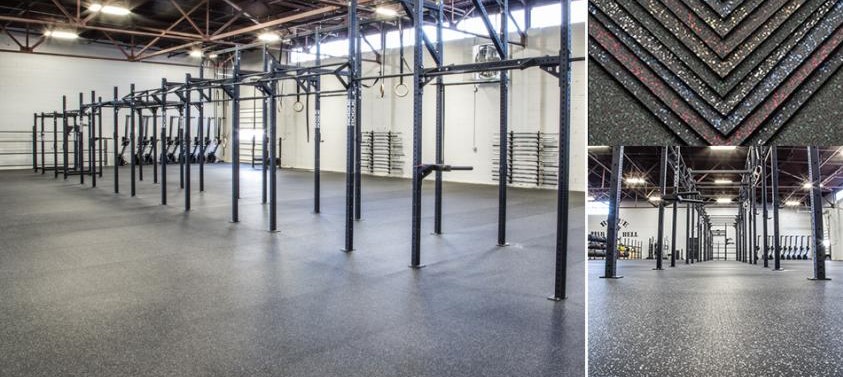
The only issue I see with them is their rolls are only 3/8″ thick. That’s the max you’ll see in rolls from any brand, due to the fact that anything thicker won’t roll up. 3/4″ stall mats are sold only in sheets, typically 4’x6′.
3/8″ thick can be fine for most of your gym area. It will protect a concrete floor and give good footing.
For Crossfit / olympic lifting you would best double-up the rubber to absorb dropped barbells or add a layer of 3/4″ plywood as the bottom layer, which will be around half the price of doubling up the rubber.
Rogue Has a New Squat Bar
They knurled the entire shaft of this sucker. Normally the best you see is a helpful bit of center knurling, some smooth areas, and more knurling. Nope. They kept the knurling tool going. Two sets of smooth ring marks give you all you need to stay centered.
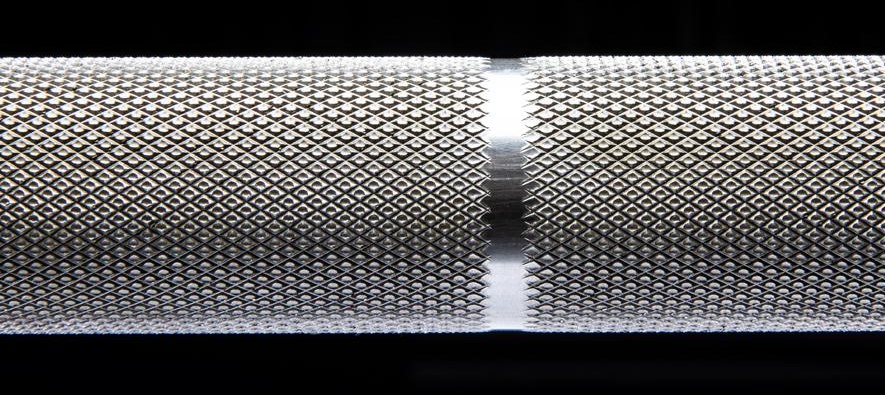
Like a specialty deadlift bar, this squat bar is nearly 8ft long, and for a totally different reason than a deadlift bar. The Rogue Ohio Deadlift Bar and Texas Deadlift Bar have a long shaft to cause extra flex for a smoother pull off the floor.
The squat bar is not made to flex. In fact, it has a thick 32mm shaft so that it doesn’t. The dude in this pic has 935 lbs on the bar to make it flex this much.
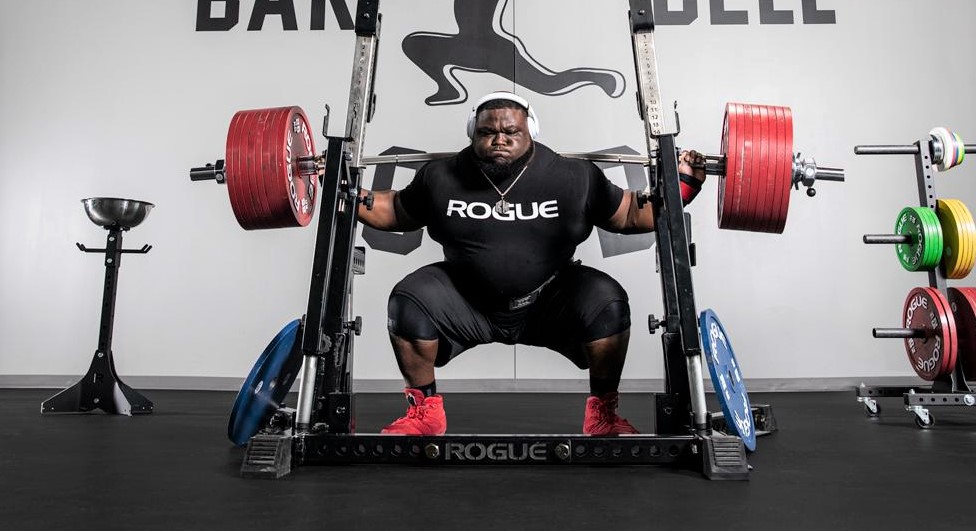
It has the long shaft for 2 reasons:
- To make it easier to re-rack as you walk forward and back. With 5″ of slop on either side, you’d have to be blind to hit the bar shoulder on the J-cups.
- To facilitate an extra-wide grip. This bar gives you room to grip outside the rack’s J-cups. Just be careful with your hands when racking. You’re giving up the extra safety of the 6″ of slop. Sandwich J-cups that give you more room come in very helpful here.
…And New Fleck Bumpers!
Vulcan Strength originally made this flecked design popular with their Alpha bumpers. Problem is, after a few years they’re still frequently out of stock. Supply chain problem, no warehouse space? I don’t know. All I know is they can’t keep up.
Rogue and FringeSport both jumped on board with their versions. Now you don’t have to wait.
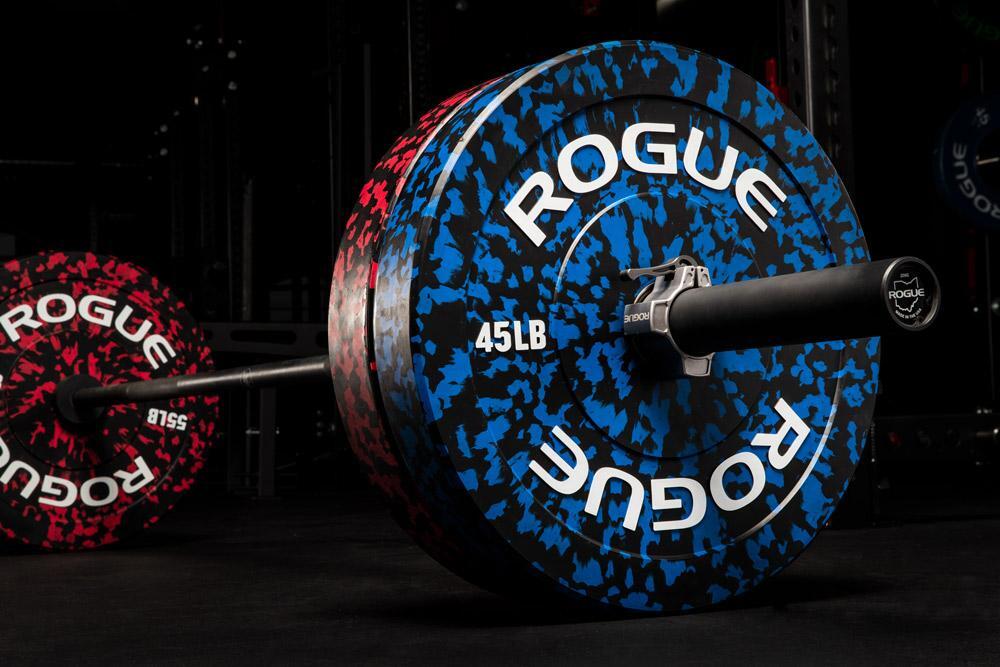
Rogue’s model appears to be somewhere in between Rogue’s Echo bumpers and HG 2.0 bumpers in terms of the thickness, which becomes important if you start maxing out the bar sleeve length on deadlifts at somewhere over 4 plates (405 lbs) with the HG bumpers.
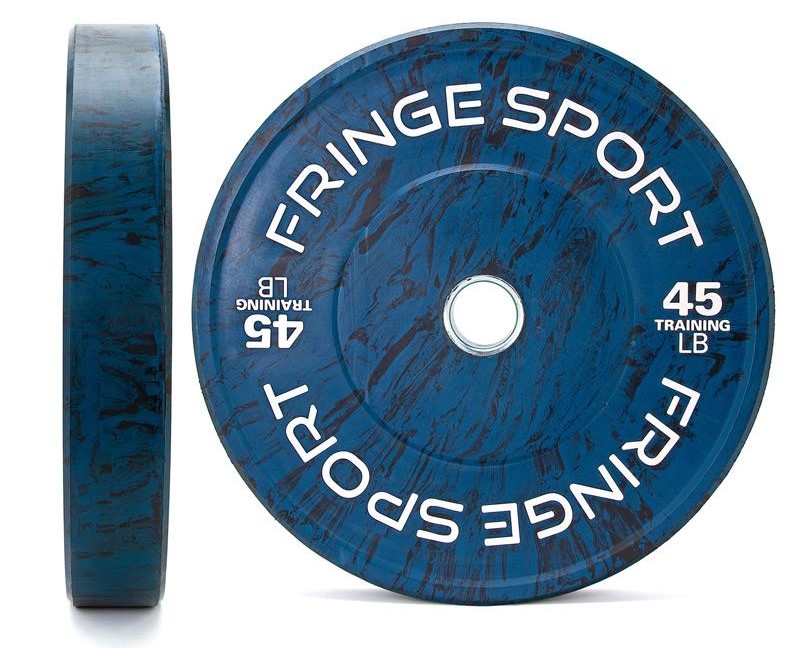
FringeSport has similar bumpers that look way better I think. More like that liquid pour art stuff than the old color fleck like you see in gym flooring. It reminds me of countertops.
Unlike Rogue, FringeSport has an anchoring system in the hub to prevent the collars from loosening.

